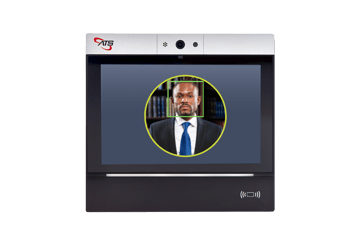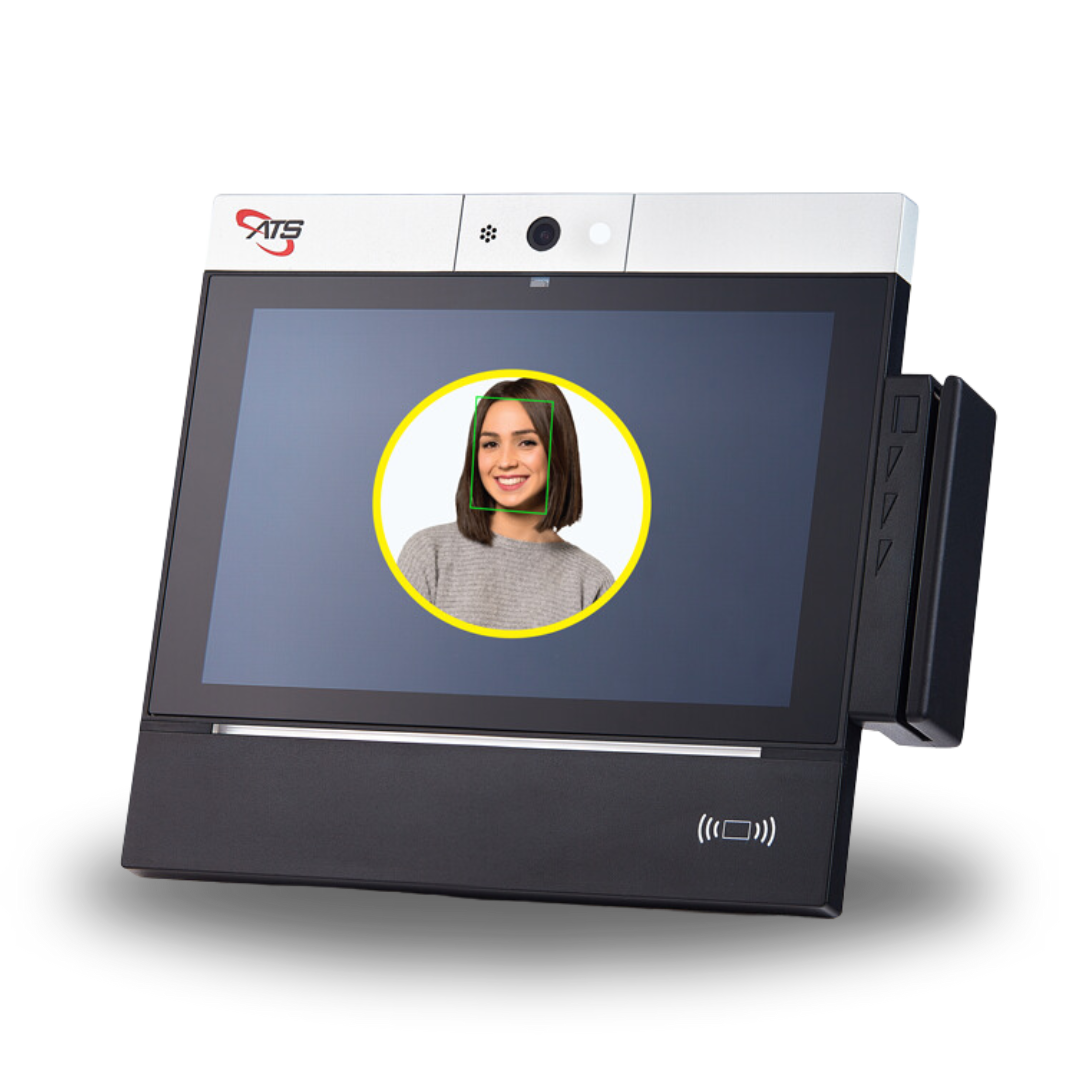Facial recognition technology is no longer the province of law enforcement agencies. It has wide applications – including helping your customers lower their payroll bloat and increase productivity with facial recognition time clocks.
For companies like yours, selling a facial recognition time clock represents a lucrative financial opportunity. In this article, we share some valuable information about biometric facial recognition time clocks to help you get started exploring.

How Facial Recognition Time Clocks Work
-3.png?width=295&height=245&name=STRIDE80%20Now%20With%20Facial%20RECOGNITION%20(800%20%C3%97%20540%20px)-3.png) There have been significant improvements in face recognition technology that take it well beyond basic feature mapping. Advanced facial recognition time clock technologies gather thousands of data points through mapping the topography of a person’s facial features.
There have been significant improvements in face recognition technology that take it well beyond basic feature mapping. Advanced facial recognition time clock technologies gather thousands of data points through mapping the topography of a person’s facial features.
It runs the facial data through an algorithm, converting it into a secure digital data string, or “template”. This digital code is used to verify a user’s identity at the time clock. A biometric template by itself presents no privacy risk. Each template is an encrypted data string that can’t be reconstructed into a recognizable face.
Employees get their unique template created at the facial recognition time clock with this simple process:
- An employee identifies themself at the time clock through alternative means, like entering their ID number.
- The face detection device on the time clock scans the employee’s face.
- The facial recognition software maps the facial features to create a unique employee biometric template.
Once the template is created, the employee can then use the face recognition time clock for everyday tasks.
To determine which integration option might work best for your company:
#1. What Time Collection Software Do You Want to Use on the Clock?
You can use our TimeCollect software or build your own Android-based time collection software. Our TimeCollect already has the necessary integrations pre-built. We’ll work with you to integrate it with your system.
If you want to use your own time collection software, we have tools to help you port it easily. You will receive our SDK and a variety of APIs to connect your time collection software with Only|You ™ Face. These tools include our Simplified Bio APIs for easy deployment of IDassist.
#2. No Middleware Technology? No Problem
Middleware is the only efficient way to manage customer time clock deployments. This is especially true to manage different facial recognition databases across their time clocks.
You can build middleware and the integrations needed between Only|You ™ Face and your system.

#3 The Easiest Way to Manage and Scale Facial Recognition Time Clock Deployments
If you don’t have your own middleware, the fastest way to market with a facial recognition system is our AccuCloud solution.
AccuCloud is our cloud-based time collection solution that gives you all the necessary components to run a comprehensive biometric time collection system. With AccuCloud you receive:
- Prebuilt integrations between the stride80 time clock, Only|You ™ Face software, TimeCollect, and our middleware.
- We work with you to configure AccuCloud to your specifications and integrate it with your solution.
- We ship your facial recognition time clocks to your customers, so you can lower administrative costs and lower overhead.
We Get You to Market Fast
We’ll meet you with our Only|You ™ Face system wherever you are.
 If you don’t want to build anything, our AccuCloud solution delivers everything you need. If all you want is time clocks and facial recognition software, we can do that too.
If you don’t want to build anything, our AccuCloud solution delivers everything you need. If all you want is time clocks and facial recognition software, we can do that too.
Either way, we handle the entire provisioning process. Your company never has to touch a time clock. Taking full responsibility for provisioning is one way we make sure our Only|You Face resale program is a profitable opportunity for our partners.
Best Practices for Facial Recognition Time Clocks
Follow these best practices for using facial recognition systems and recommend them to your customers.
Addressing Privacy
Some employees will have privacy concerns about using facial recognition. Address their concerns directly with clear communication about what facial recognition data is collected and how it’s stored.
The message should focus on what is not kept in face recognition databases, like employee photos or images.
Staying in Compliance with Biometric Laws and Regulations
Some jurisdictions have facial recognition laws or regulations. The Illinois’s Biometric Information Privacy Act (BIPA) is one of the broadest and most influential. It sets out requirements for the collection and storage of facial data.
It also prohibits requiring employees use biometric technology. Under BIPA, companies must get an employee’s affirmative consent to participate in any biometric system. They must also provide a clear and easy path to revoke consent. There are also regulations regarding how informed consent and opt out documents must be maintained.
BIPA is a model for managing employee privacy and facial recognition data, especially in jurisdictions with lighter or nonexistent regulation.
Ensuring Facial Recognition at the Time Clock Works Smoothly
Installing the time clock in the right place on the wall is critical. Wall placement impacts how much space is needed in front of the time clock so people of varying heights can stand in the right spot for an optimal face scan.
Adding Facial Recognition Time Clocks is Smart Business
Facial recognition has the broadest application among biometric technology for clocks. Employees in many industries have difficulty using a fingerprint or handprint reader, such as healthcare, construction, manufacturing and food services.
By adding facial recognition time clocks to your product offerings, you can attract more customers seeking biometric time clocks, expanding your market reach.
Contact us today to schedule a demo. See how quickly you can provide facial recognition technology to your customers and prospects.




-3.png?width=295&height=245&name=STRIDE80%20Now%20With%20Facial%20RECOGNITION%20(800%20%C3%97%20540%20px)-3.png)

